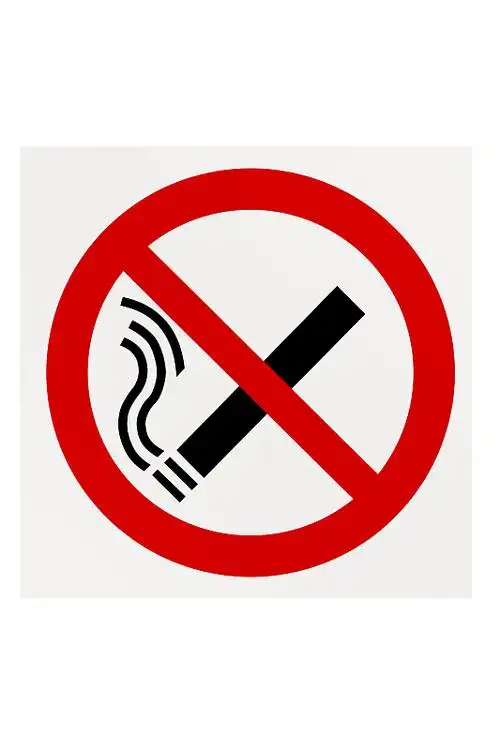The Smoker's Paradox: How Tobacco Use Dampens the Crucial Post-Exercise Boost in VO2 Max
We all know the feeling. You’ve just crushed a workout—your heart is pounding, your lungs are burning in the best way possible, and you feel a profound sense of accomplishment. What’s happening inside your body in the hours and days that follow is just as critical as the exercise itself. This is the period of adaptation, where your body, having been challenged, rebuilds itself to be stronger and more efficient. A central hero in this story is a metric known as Maximum Oxygen Uptake, or VO2 max. It's the gold standard for cardiovascular fitness, measuring the maximum amount of oxygen your body can utilize during intense exercise.
But for millions of smokers and ex-smokers who engage in physical activity, this beautiful process of adaptation is under silent siege. A growing body of research points to a specific and concerning phenomenon: smoking reduces the amplitude of the decrease in post-exercise maximum oxygen uptake. Let's unpack this seemingly complex phrase, because understanding it is key to unlocking why smoking and peak fitness are fundamentally at odds.
First, we need to reframe our understanding of what happens after a workout. When you finish a strenuous session, your VO2 max doesn't instantly bounce back to normal. It actually takes a dip. This post-exercise decrease in VO2 max is not a sign of weakness; it's a sign of a system that has been effectively stressed. This temporary reduction is part of the body's inflammatory and repair response. Resources are diverted to repair micro-tears in muscle fibers, replenish energy stores, and, most importantly, signal for long-term improvements. The "amplitude" of this decrease refers to its depth and duration—how low does your VO2 max go, and for how long? This dip is a crucial trigger for adaptation.
Now, enter the disruptor: tobacco smoke. The premise that smoking reduces amplitude of decrease in post-exercise maximum oxygen uptake essentially means that smoking blunts this vital physiological signal. It doesn't mean smokers recover faster; it means their bodies are less responsive to the exercise stimulus. The beautiful, sharp dip in VO2 max that should act as a powerful catalyst for improvement becomes a shallow, muted curve. The body's cry for adaptation is muffled.
So, how does smoking orchestrate this interference? The mechanisms are multifaceted and destructive, primarily revolving around the twin assaults of carbon monoxide and chronic inflammation.
1. The Carbon Monoxide (CO) Sabotage: This is perhaps the most direct mechanism. When you inhale cigarette smoke, you're inhaling large amounts of carbon monoxide, a gas that has a 240-times greater affinity for hemoglobin than oxygen. Hemoglobin is the oxygen-carrying protein in your red blood cells. When CO latches onto it, it forms carboxyhemoglobin, effectively turning your red blood cells into useless taxis that are already occupied. This dramatically reduces the oxygen-carrying capacity of your blood.
After a workout, your muscles are desperate for oxygen to fuel the repair processes. But in a smoker, a significant portion of the blood's transport system is out of service. This means that even at rest, the body is in a state of relative hypoxia (low oxygen). The post-exercise VO2 max response is therefore initiated from a lower baseline. The "dip" has less room to occur, and its signal is confused because the system is already compromised. The body is struggling with basic oxygen delivery, let alone supercharging it for future performance. This is a core reason for the reduction in VO2 max amplitude after exercise seen in smokers.
2. The Systemic Inflammation Quagmire: Smoking is a pro-inflammatory state. It constantly floods the body with irritants and oxidative stress, keeping the immune system on high alert. Exercise itself is a controlled, acute inflammatory stressor. It’s this acute stress that prompts a beneficial, adaptive inflammatory response. However, when you layer exercise-induced inflammation on top of the chronic, low-grade inflammation from smoking, the system becomes overwhelmed.
Key players in exercise adaptation are signaling molecules called cytokines. After a good workout, there's a predictable spike in inflammatory cytokines (like IL-6) followed by a rise in anti-inflammatory cytokines (like IL-10), which helps to orchestrate repair. In smokers, this delicate balance is thrown off. The anti-inflammatory response is often blunted, while the pro-inflammatory state persists. This chronic inflammation damages the mitochondria—the powerhouses of your cells responsible for aerobic energy production. With impaired mitochondria, the very engine that VO2 max measures is less efficient. Therefore, the amplitude of VO2 max decrease post-workout is diminished because the cellular machinery responsible for utilizing oxygen and responding to the stress is already damaged and less responsive. This links directly to the long-term impact of smoking on cardiorespiratory adaptation, preventing the improvements in mitochondrial density and efficiency that non-smokers enjoy.
3. Vascular Damage and Nitric Oxide Suppression: A healthy recovery depends on robust blood flow to deliver nutrients and clear waste. Smoking severely damages the endothelium, the inner lining of your blood vessels. A key molecule produced by a healthy endothelium is Nitric Oxide (NO), a potent vasodilator that opens up blood vessels. Smoking suppresses NO production, leading to stiffer, less responsive blood vessels.
After exercise, when blood flow needs to be redirected to repairing muscles, a smoker's constricted vessels can't comply as effectively. This impaired recovery blood flow further starves the muscles of oxygen and nutrients, contributing to the blunted post-exercise VO2 max kinetics and slower overall recovery, even if the perceived feeling of fatigue is similar.

The consequences of this blunted response extend far beyond just not getting faster or stronger.
- Diminished Training Returns: The primary consequence is that smokers get less bang for their buck from every workout. They put in the same effort as a non-smoker but receive a smaller adaptive signal. This leads to a lower fitness ceiling and can contribute to feelings of frustration and plateau.
- Prolonged Perceived Recovery: While the VO2 max dip may be shallower, the actual functional recovery—the feeling of being fresh and ready for the next session—is often prolonged. The muscle soreness and fatigue might last longer because the repair processes are inefficient.
- Increased Injury Risk: Inefficient recovery and chronic inflammation create a environment where overuse injuries are more likely. Tissues that haven't fully repaired are more susceptible to strain and damage in subsequent workouts.
The good news in this sobering analysis is that the body possesses a remarkable capacity for healing. The negative impact of smoking on cardiorespiratory adaptation is not always permanent. Research shows that upon quitting smoking, the carbon monoxide levels in the blood normalize within days, allowing hemoglobin to resume its proper job. Over weeks and months, the inflammatory markers begin to decrease, and endothelial function starts to improve.
This means that the post-exercise VO2 max response can gradually normalize. The amplitude of the decrease can become more pronounced and effective again, allowing the body to once again "hear" the signal from exercise and respond with robust adaptations. Former smokers often report making significant fitness breakthroughs months after their last cigarette, a testament to their body's restored ability to adapt.
In conclusion, the statement that smoking reduces the amplitude of decrease in post-exercise maximum oxygen uptake is more than just a scientific observation. It encapsulates the fundamental conflict between smoking and fitness. It reveals that smoking doesn't just harm your lungs during a run; it sabotages you during the rest and repair phase where true fitness is built. It stealthily disconnects the effort you put in from the results you deserve. For anyone striving to improve their health and performance, understanding this hidden battle is the first step toward winning it. The most powerful performance-enhancing drug isn't found in a syringe; it's found in the decision to extinguish the last cigarette, allowing your body to fully embrace the powerful, adaptive voice of exercise once again.














